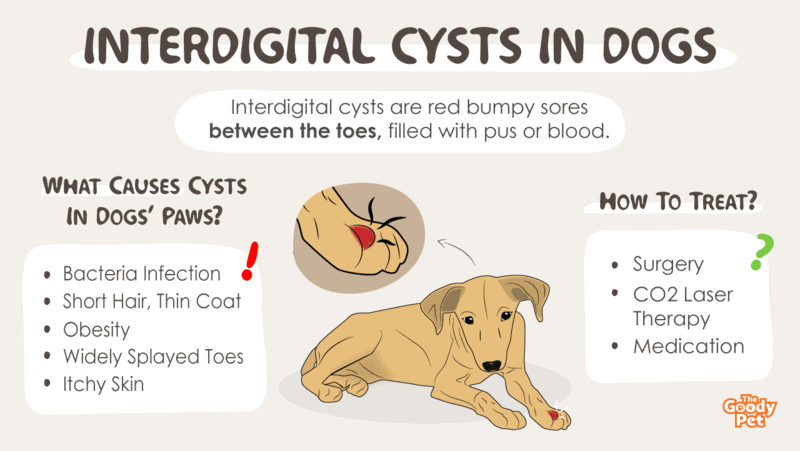Interdigital cysts can be a very painful and frustrating experience for your dog, especially when the painful lesions become red and your dog starts limping. So what exactly is an interdigital cyst?
Interdigital cysts are bumpy sores between the toes. Unlike tumors, these cysts are usually red and filled with pus or blood. While a majority of dog owners will consider limping as a sign of an injury, it is one of the primary symptoms of interdigital cysts in dogs.
Similar to tumors, other symptoms of cysts may include irritated or itchy skin over the swollen area, swollen lymph nodes, lameness, and abnormal bumps ranging in size from medium to very large. If your canine companion is showing signs of interdigital cysts, you definitely want to know the common underlying factors of these lumps and what you can do about it.
In this article, we will take a look at all matters related to interdigital cysts in dogs, including common causes of cysts in dogs’ paws, what happens if cysts are left untreated, and how to prevent interdigital cysts in dogs.
This article will also look at how to treat interdigital cysts in dogs, as well as the symptoms of severe interdigital cysts in dogs. But, before we get into that, let’s talk about your main concern. What causes interdigital cysts in dogs?
What Causes Cysts In Dogs’ Paws?
While there are many factors that cause cysts in dogs, the most common cause is a deep underlying bacterial infection.
Other common predisposing factors that cause cysts in dogs’ paws include:
Length And Thickness Of Hair
Interdigital cysts are more common in short-haired dogs, such as Boxers, Mastiffs, Bulldogs, Bull Terriers, and Great Danes. The shorter the hair gets, the thinner the overall coat becomes, and the easier bacteria can penetrate through to reach the soft tissue beneath the skin. This condition will exacerbate with frequent licking on the skin surrounding the pads due to friction.
Obesity
Obesity in dogs further increases the downward stresses their paw pads will experience. This, in turn, leads to the development of false pads that develop into cystic lesions.
Paw Shape
Having widely splayed toes, more often than not, leads to interdigital web traumatic damage during movement.
Itchy Skin
Irritating skin that causes the puppy to frequently lick its paws will generate lesions due to friction that will progress into larger sores.
Symptoms Of Interdigital Cysts
Having understood the factors causing cysts, it is also important to know and identify when interdigital cysts happen to your pooch.
- Excessive licking
- Inflammation and redness
- Hairless bumps between the toes
- Bleeding, discharge of pus and fluids
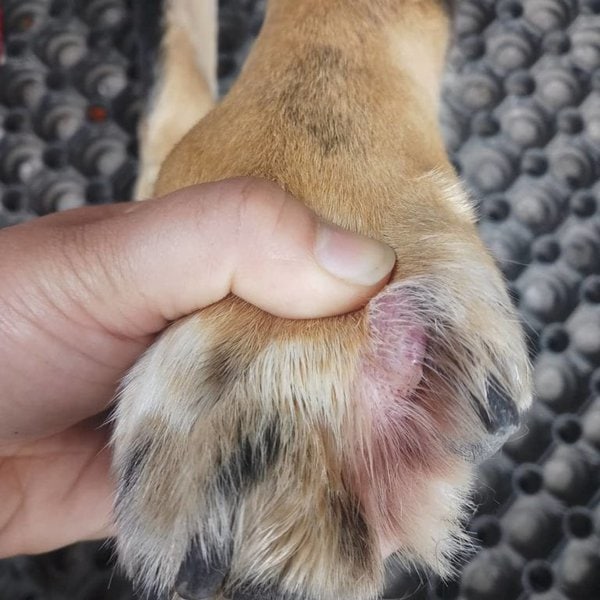
Are Cysts In Dogs Hard?
Yes, hard cysts in dogs often develop deeper beneath the skin and contain either protein or trapped dead skin cells. Hard cysts always form as a result of a clogged hair follicle or oil gland.
Ruptured Cysts
Cysts will burst to release brownish, grayish-white, or cottage cheese-like fluid. Immediately a cyst ruptures, it’s critical to keep it clean and free of bacteria while ensuring that it doesn’t bother the dog. This reduces the risk of bacterial infection.
Both bacteria and moisture can be easily trapped by the hair matting around the wound. Thus, it is important to trim the hair around the cyst. Also, do not keep the wound bandaged as it increases moisture and the possibility for bacteria growth.
What Is The Best Way To Treat A Ruptured Cyst In A Dog?
Use saline in a syringe to clean the region around the cyst more than twice a day to avoid upsetting the painful skin. You should wipe away the cyst opening using a piece of gauze soaked with saline.
Take your pooch to the vet to remove the ruptured cyst with a laser. The vet won’t drain or squeeze a ruptured cyst as it is not usually recommended because it won’t entirely remove the blockage and may cause the cyst to regrow.
Keep your dog in a quiet, enclosed place for recovery and rest after surgery. Follow your vet’s postoperative instructions as you replace your dog’s bandages on a frequent basis.
Should You Attempt To Pop Or Squeeze A Cyst?
No, squeezing a cyst will hurt your puppy. In addition, removal under non-sterile procedures will cause infection, worsening the situation.
Squeezing cysts is also not recommended since it will cause the cyst to burst under the skin, and this will lead to bacterial skin infections like cellulitis. If a cyst persists after many weeks of self-treatment, it’s time to visit your vet.
How Do You Treat An Interdigital Cyst On A Dog?
Interdigital cysts can be commonly treated in three ways, namely surgical methods, proper medication and laser therapy.
Surgery
In more serious cases, dogs will require surgery. A specialist can remove the infected webbing and stitch the toes.
Alternatively, vets may suggest fusion podoplasty, which involves removing the web that connects a dog’s paws. Following surgical operations, paws will need to be wrapped, and vets often advise wearing protective footwear.
Medication
As cysts are frequently caused by bacterial infections, vets often administer antibiotics and anti-inflammatory medications. Oral anti-inflammatory treatment is always administered since cream antibiotics are rarely sufficient.
It will always take time for oral anti-inflammatory drugs, antibiotics, as well as foot soaks to be effective in treating the condition.
CO2 Laser Therapy
In worse conditions, prolonged infections will be treated with a CO2 laser. The cysts are safely trimmed out by the use of a CO2 laser that vaporizes the nodules from the webbing.
This enables the tissue to recover while maintaining the typical shape of the paw. It can, however, necessitate numerous treatments.
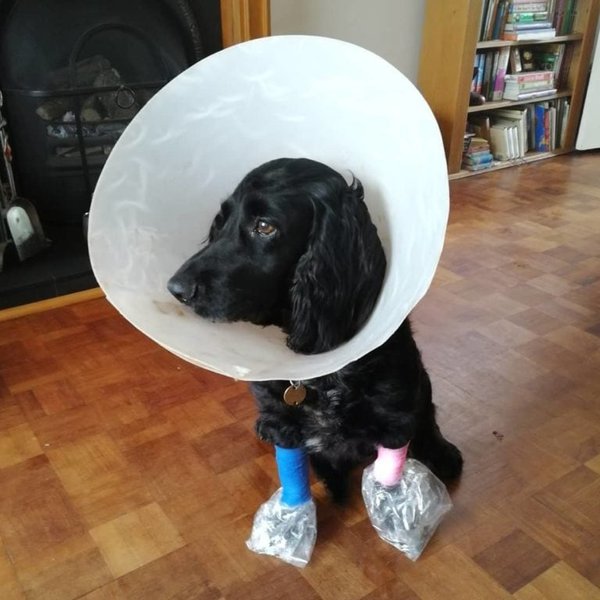
How Much Does It Cost To Have A Cyst Removed From A Dog?
Depending on the approach you choose, treatment costs will range from $200 to $1,000. Since they occur as a result of different conditions, the price will be determined by the remedy used.
At first, the treatment is always external, which is less expensive than surgery. Under critical conditions, your vet may have to use a microscope to analyze the cultures in order to know the real cause of the cyst.
How Long Do Interdigital Cysts Last?
The duration of the cyst is often determined by the treatment method administered. These cysts are not just fluid-filled lumps but infected lesions, and therefore they must be treated. The fluid will be drained, and antibiotics will most likely be prescribed by the vet.
If the wound has been drained and dressed, the bandaging may need to be left on for 3 to 6 weeks. This is dependent on the size and severity of the problem.
Do Interdigital Cysts Go Away?
Yes, interdigital cysts will go away after treatment, but this is largely dependent on what is causing the cysts, how they are treated, and whether they are treated at all.
The underlying issue causing the cysts must be resolved, or else they may and will return. They become considerably worse if you ignore them.
Ensure you get a proper diagnosis as early as possible, restrict all complicating conditions, and offer proper remedies before resorting to more drastic measures. Any affected webbing should be removed entirely during surgery, and the paws should be reattached together for recovery.
What Can Happen If A Cyst Is Left Untreated?
A cyst will either rupture or continue to grow, causing much discomfort or pain to your puppy if left untreated.
Whenever the cyst ruptures, it will regrow. This is due to the fact that the cyst-containing pocket is still present, and the tissue will continue to produce cells and refill this cavity, necessitating the prompt removal of this pocket.
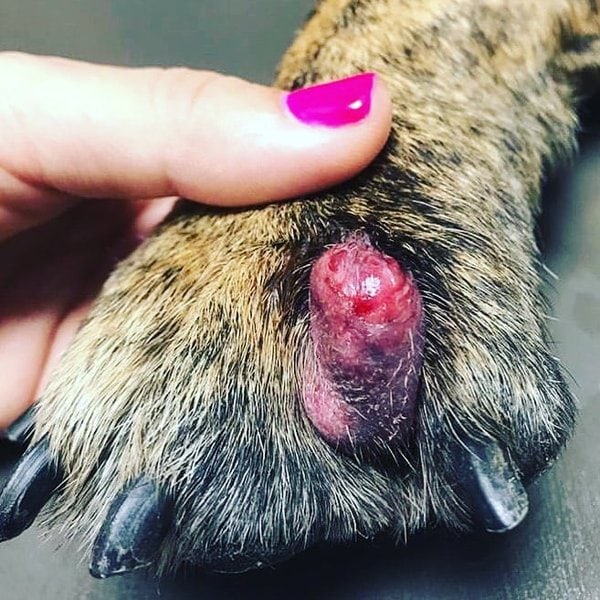
Do Interdigital Cysts Bleed?
Yes, these interdigital cysts will bleed just like any injury. If you allow your canine companion to lick the lesions, or if there is too much friction while it walks, are examples of triggers that cause these cysts to rupture.
The interdigital cysts usually will never bleed if there is no friction on them. If a cyst ruptures and starts bleeding, the sore must be kept clean and covered with a bandage.
It’s critical to keep your dog from scratching, rubbing, biting, or licking the nodules since this can result in irritation, bleeding, and infection.
Can Cysts Be Cancerous In Dogs?
Cancerous cysts usually show up as dark bumps on the skin that can either gradually or abruptly grow in size. They also can appear to change in size on a regular basis, either smaller or larger.
Some of the warning signs that a cyst is cancerous include enlarging lymph nodes, swelling affecting a bone or lameness, abnormal lump ranging in size from tiny to large, and discolored, itchy skin over a lump.
How Do You Prevent Interdigital Cysts In Dogs?
To prevent interdigital cysts in your pooch, one of the common preventive practices is to brush its coat on a regular basis, 3 to 4 times per week, to stimulate glands in releasing keratin.
Not only does this satisfy the grooming requirements in caring for your pooch, this will also prevent the clogging of these glands, thereby inhibiting the growth of interdigital cysts.
Besides regular brushing, the following list is a compilation of the recommended practices and remedies you can do, even at home, to prevent interdigital cysts in your dog.
Check Your Dog’s Paws Daily
Monitoring your dog’s paws can help with the early detection of interdigital cysts forming between the toes. If you notice that there are signs of sores, do bring your pooch to the vet right away. Cease any former activity that your pooch was previously engaged in, as it may be a probable cause for the sores.
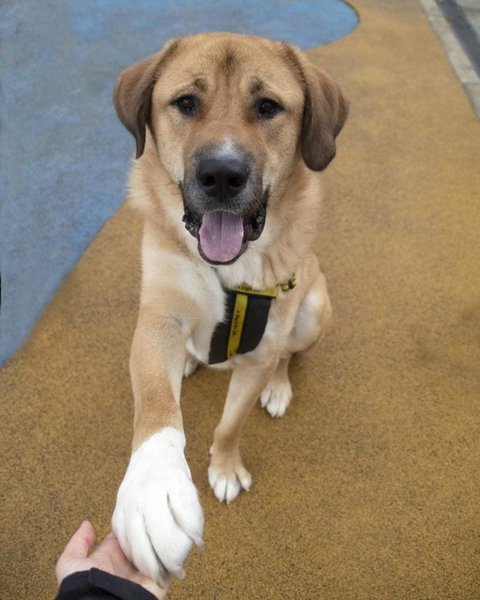
Tackle Obesity Issues
As obesity leads to additional stresses on your dog’s paws, especially during running or walking, the interdigital cysts may take a longer time to heal due to these stresses.
Start by introducing your dog to a balanced diet to keep its weight ideal, thereby reducing the unwanted trauma and stresses on its paws.
Dog Booties
Wearables like dog booties can help protect the paws from dirt, friction, and trauma your pooch will experience while walking or running.
When recovering from interdigital cysts, avoid exercising your pooch for hours or long distances. If there is a need to walk your dog, do get the booties for your dog to preserve its delicate paws.
Shampoos, Epsom Salt Soaks, Paw Balms, And Butters
Working hand in hand, these three products should help alleviate and soothe your dog’s pain. Epsom salt soaks, and shampoos are great for cleaning the toes of your pooch, as they are deemed to be effective antibacterial and antifungal agents.
Then, apply paw balms and butters to help moisturize its paws to avoid cracked paw pads. Paw balms and butters provide all of the necessary protection for your four-legged friend’s paws. They have anti-inflammatory effects and aid in the healing of your pup’s dry and damaged skin.
When choosing a paw balm or butter, the ideal choice should comprise natural ingredients and dog-friendly substances. Do read the labels carefully before purchasing.
Here are examples of common moisturizing ingredients:
- Safflower oil – This is a common organic ingredient used in paw balms or butters.
- Beeswax – This ingredient has natural moisturizing properties.
- Candelilla wax – This creates a barrier that keeps irritants away from the skin.
- Vitamin E – This is beneficial to both the inside and outside skin of your dog. It helps to enhance muscle growth while reducing flakiness.
- Coconut oil – This hydrates and relieves the skin of a dog in a natural way.
For this purpose, we recommend Bodhi Dog USDA Certified Organic Paw Balm. Its organic, non-toxic and hypoallergenic formulation contains all-natural ingredients to help soothe and relieve affected paws by locking in the moisture.
Always remember that the cyst is merely a sign brought on by an illness, it is the infection that must be addressed and cured for a full recovery. Therefore, if the cyst is left untreated, it will worsen instead of disappear.
As interdigital cysts in dogs are a result of different factors, dog owners have to figure out what’s the cause and eliminate it. Your vet can help you out by doing a variety of skin tests to assist in determining the causes.

